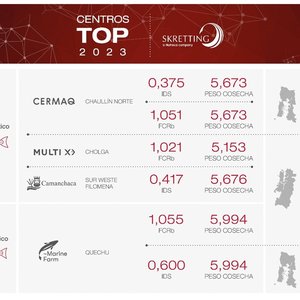Feed provides salmon juveniles with sufficient vitamin K
Factors such as nutrition, water temperature and rapid growth play a key role in bone development of Atlantic salmon. Novel research shows that the naturally occurring level of vitamin K present in fish feed given to Atlantic salmon juveniles is sufficient for good growth and bone health from the start of feeding until smoltification.
Norway produced more than 700 000 tons of salmon in 2007. The development of bone deformities presents a challenge to the aquaculture industry. The cause is unknown, but the composition of the feed for various stages of the salmon’s lifecycle is probably a key factor.
One theory is that vitamin K deficiencies in fish can have negative effects on bone mineralisation. Although research shows that farmed salmon get enough vitamin K through the feed from the start of feeding until they weigh around 100 grams, says Robin Ørnsrud, researcher in the seafood safety research group at the National Institute of Nutrition and Seafood research (NIFES).
New method of measuring vitamin K in feed
The vitamin K content in fish feed can vary, depending on the raw materials, and is not well documented. Synthetic vitamin K is therefore added to the fish feed, but it is unstable and can leak out in the process. After implementing a new method which few other laboratories have, NIFES is able to measure the vitamin K content in fish feed. It is common practice to state the amount of vitamin K added to commercial feed rather than document the actual amount of vitamin K present.
Substantial loss of vitamin K in the feed process
During a feeding trial extending over six months from the start of feeding, Atlantic salmon juveniles in fresh water were given a feed to which between 0 and 50 mg of synthetic vitamin K per kg of feed had been added.
All the fish in the trial showed good growth and health. Neither X-rays nor strength tests of the spine revealed any difference among the different fish groups. In other words, even the fish that had not been given the synthetic additive received sufficient amounts of vitamin K. This indicates that salmon juveniles need a low level of vitamin K, and that the naturally occurring content of vitamin K in fish feed ingredients may be enough to maintain good fish growth and bone health, says Ørnsrud.
There was a surprisingly substantial loss of synthetic vitamin K after the feed production process and storage. This shows how important it is to be able to analyse the vitamin level in the feed that is consumed by the Atlantic salmon, and not just state the amount of the additive. In view of the large loss of vitamin K in the process, it is difficult to conclude how much vitamin K should be added to the diet in order to meet the Atlantic salmon’s requirements, says Ørnsrud.
At present, it is recommended adding 10 mg of vitamin K per kilo of feed for salmon. By comparison, the recommended amount of vitamin K to be added for other production animals varies from 0.05 to 1.5 mg per kilo of feed.
This trial examined the vitamin K requirement of Atlantic salmon juveniles. What the requirement is during smoltification and in the seawater phase until harvesting size is still uncertain, says Ørnsrud.
Collaborating partner: Institute of Marine Research, Norway. Contact: Robin Ørnsrud, NIFES for more information.







